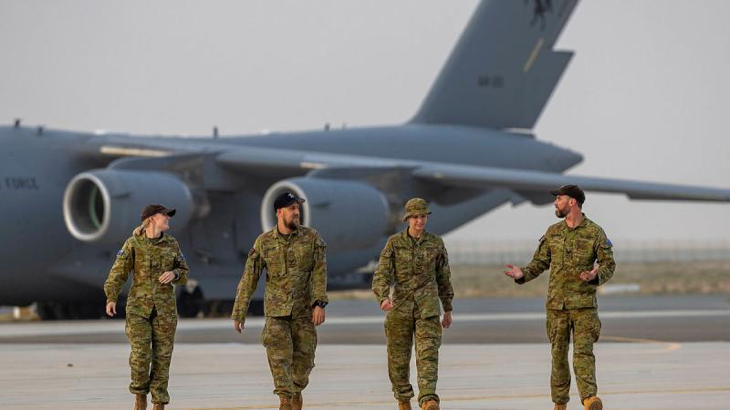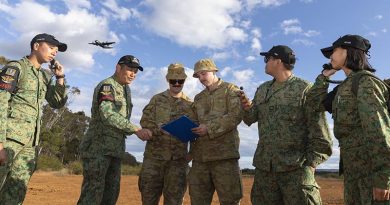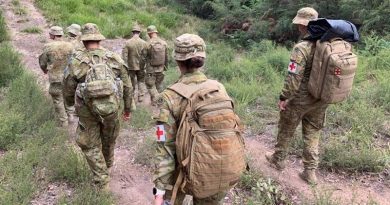Aussies deploy on Operation Hydranth

As Houthi rebels sank and raided vessels in the Red Sea, the Australian Government announced ADF personnel would deploy under the newly formed Operation Hydranth.
CAPTION: RAAF 36 Squadron personnel walk from a C-17 Globemaster towards Hurley’s Hangar after arriving at Australia’s main operating base in the Middle East region. Story and photo by Corporal Jacob Joseph.
The ADF team is embedded in the US-led headquarters to support Operation Poseidon Archer – the US and UK strikes targeting Houthi capabilities.
It came after the ADF increased the number of personnel contributing to combined maritime forces in Bahrain – a coalition of 43 countries safeguarding one of the world’s busiest shipping lanes.
Defence no longer has thousands of boots on the ground in the Middle East, but for the servicemen and women deployed on Operation Accordion at Headquarters Middle East (HQME), work continues to support new and continuing operations, such as Hydranth and Manitou, in the region and beyond.
Whether billeting soldiers and refuelling aircraft headed to Europe to train Armed Forces of Ukraine personnel under Operation Kudu, or providing telehealth for peacekeepers in Syria and Lebanon, HQME’s strategic location enables ADF operations in the northern hemisphere, according to Commander HQME Colonel Scott Morris.
“As a country that has national interests beyond its near region, HQME provides the Australian Government with access, options and responsive action through the Middle East into the rest of the world,” Colonel Morris said.
“Our location in the United Arab Emirates enables us to provide forward support and global mobility through the airbase we sustain.”
Operating from Dubai, the team is responsible for the logistics and administration of more than 10 continuing operations at times, involving more than 100 officers and enlisted sailors, soldiers and aviators.
HQME can send forward support teams to provide specialist logistics and engineering support, or to establish critical infrastructure, such as secure communications.
As was the case when Australian Army Sergeant Jack Oakhill installed communication networks for personnel recently deployed on Operation Hydranth.
He led a team of signallers to the base to carry out a risk assessment for operating communication equipment in an area not certified to Australian standards.
“The big benefit was to meet the team and put names to faces and see their living and working conditions,” Sergeant Oakhill said.
“Going there helped us understand the challenges they’re up against so we can better help them in their ongoing operation.”
More than 2000km away, in Cyprus, an agile response team of Defence and Department of Foreign Affairs and Trade personnel are at the ready should more stranded Australians need emergency assistance in the wake of the Israel-Hamas conflict.
Under Operation Beech, more than 800 Australians have been airlifted from Israel since the first Australian Government-assisted departure flight on October 13, 2023.
They were taken to Dubai so they could travel home.
The Air Force planes then headed to HQME for refuelling, the pilots debriefed, and the next mission was planned before the crews headed back to Cyprus ready to airlift more Australians.
As volatility in the region increases, HQME continues to play a behind-the-scenes role.
“We remain prepared and can react quickly to contingency operations in support of Australian citizens abroad; in humanitarian operations resulting from natural disaster or war; to deploy in support of our allies; and support personnel who work in peacekeeping operations,” Colonel Morris said.
.
.

.
.





